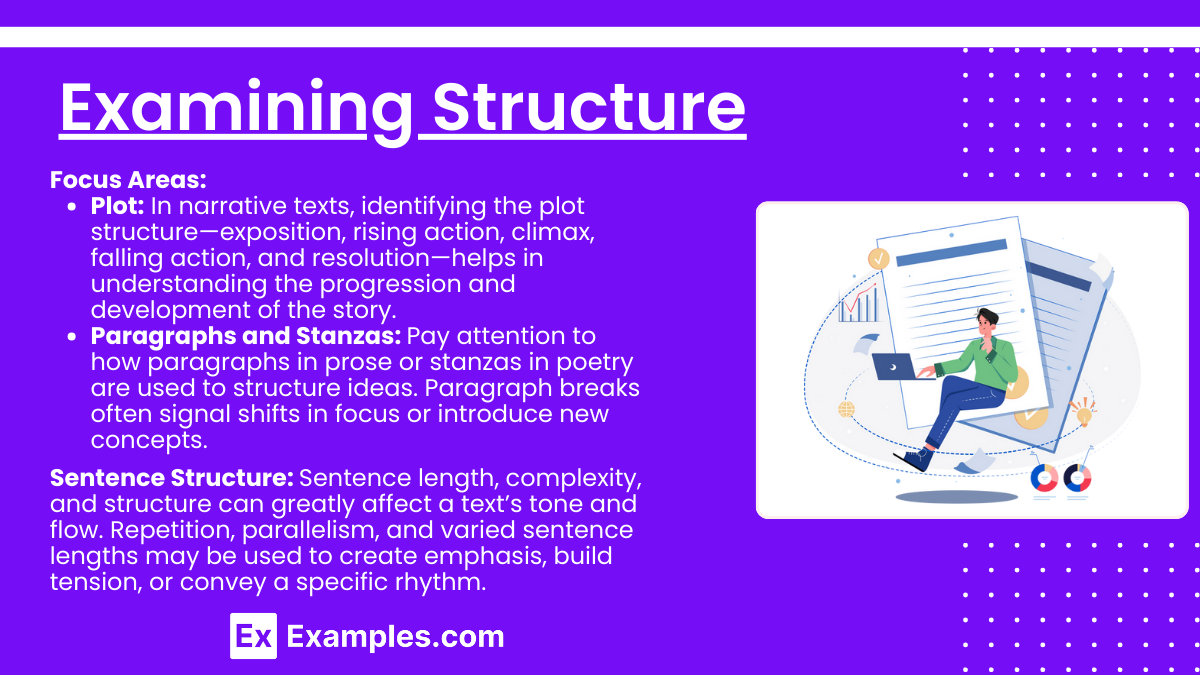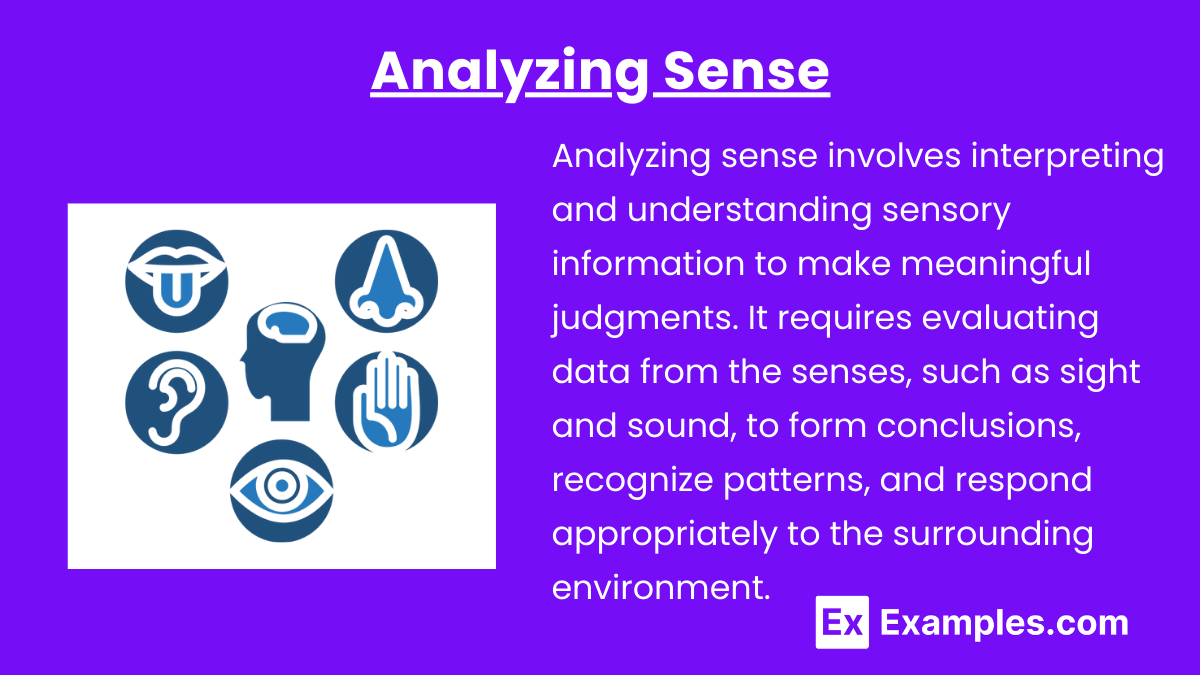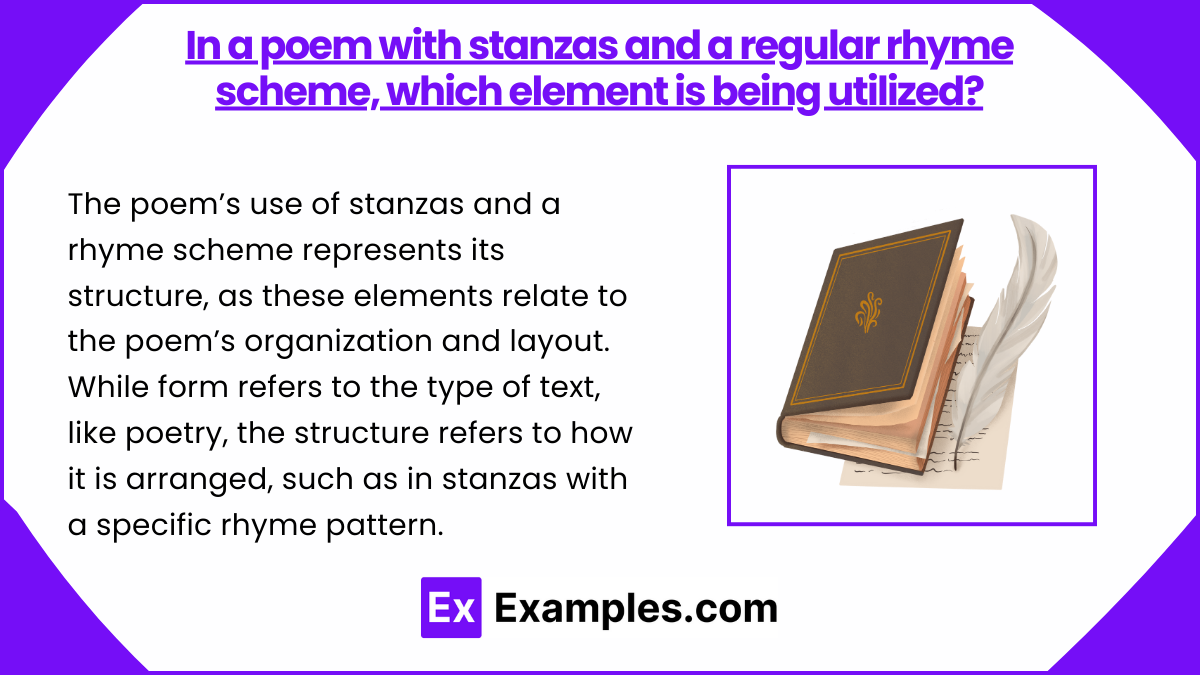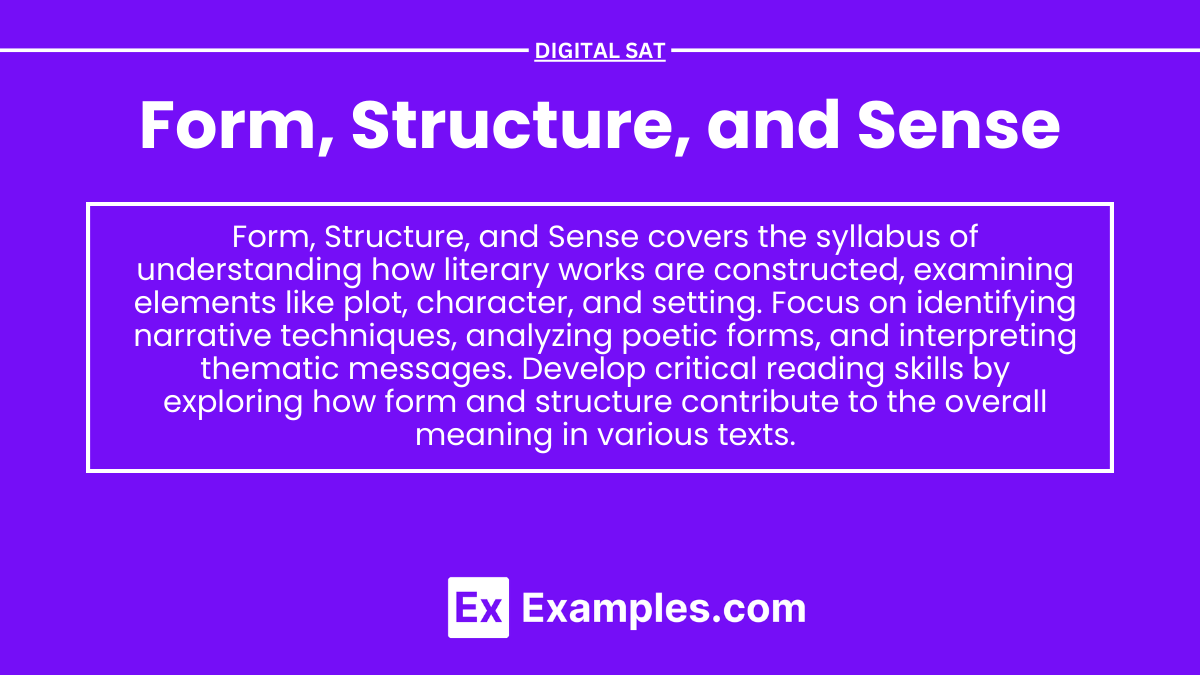“Form, Structure, and Sense” are essential elements for analyzing passages on the Digital SAT. Understanding the type of text (form), how it’s organized (structure), and its underlying meanings (sense) allows you to interpret content more accurately. Mastery of these components enhances comprehension, aiding you in answering questions effectively and maximizing your SAT score.
Learning Objectives
In studying “Form, Structure, and Sense” for the Digital SAT, you should learn to identify how different text structures, including paragraphs and sentence arrangement, contribute to the clarity and logic of a passage. Analyze the role of transitions, coherence, and organization in enhancing the flow of ideas. Evaluate how effective writing conveys meaning and purpose through appropriate form and structure. Additionally, practice recognizing how modifications to sentence structure or placement can impact the overall sense and readability of the text, improving your ability to craft and analyze well-structured responses.
1. Understanding Form

Form refers to the kind of text and its distinctive features, whether it be prose, poetry, or drama. Understanding form helps you recognize the unique conventions and tools the author uses.
- Focus Areas:
- Genre: Recognize various genres such as sonnets, novels, essays, plays, and their conventions. Each genre has specific traits that influence how a story or message is communicated. For instance, sonnets often explore themes of love and nature in structured verses, while plays use dialogue and staging to bring stories to life.
- Purpose: Each form serves a different purpose and shapes the content accordingly. For example, poetry often focuses on emotional expression and imagery, while non-fiction prose might aim to inform or persuade. Understanding why the author chose a particular form can provide insights into their intent and message.
- Organization: Note how each form is organized. Plays, for instance, are divided into acts and scenes, creating a rhythm and pacing specific to the genre. Poetry may use stanzas, rhyme schemes, and meter, which contribute to its musical quality and emotional resonance. Recognizing these structural components can reveal how ideas are developed within the form.
- Strategy: Familiarize yourself with genre-specific features and consider how they influence the tone, mood, and overall narrative style. This knowledge will help you interpret the text more accurately and appreciate the author’s choices.
2. Examining Structure

Structure refers to the way in which a text is organized, including the arrangement of ideas and events. Analyzing structure helps you understand how the author builds their argument or narrative and maintains coherence.
- Focus Areas:
- Plot: In narrative texts, identifying the plot structure—exposition, rising action, climax, falling action, and resolution—helps in understanding the progression and development of the story. Look for turning points, conflicts, and resolutions to grasp the story’s dynamics and themes.
- Paragraphs and Stanzas: Pay attention to how paragraphs in prose or stanzas in poetry are used to structure ideas. Paragraph breaks often signal shifts in focus or introduce new concepts. In poetry, stanzas can create a rhythmic pattern, emphasize key themes, or provide a pause for reflection.
- Sentence Structure: Sentence length, complexity, and structure can greatly affect a text’s tone and flow. Repetition, parallelism, and varied sentence lengths may be used to create emphasis, build tension, or convey a specific rhythm. Understanding these choices can provide insights into how the author emphasizes certain points or establishes mood.
- Strategy: Look for structural patterns and transitions between sections or ideas. This will help you follow the author’s logic and see how the parts contribute to the whole. Understanding structural devices can also enhance your ability to anticipate shifts in tone or focus within the passage.
3. Analyzing Sense

Sense refers to the meaning and themes conveyed through language. It encompasses both the explicit ideas presented and the implicit messages suggested by the text. Analyzing sense involves interpreting and understanding sensory information to make meaningful judgments. It requires evaluating data from the senses, such as sight and sound, to form conclusions, recognize patterns, and respond appropriately to the surrounding environment.
- Focus Areas:
- Themes and Main Ideas: Identifying the central themes or messages helps you understand the text’s purpose and depth. Themes are often supported by recurring motifs, symbols, or character actions. Consider how the author develops these themes across the passage and their relevance to the overall message.
- Tone and Mood: Tone refers to the author’s attitude toward the subject, while mood is the emotional atmosphere created for the reader. Word choice, imagery, and figurative language (such as metaphors and similes) all contribute to tone and mood. Recognizing these elements can help you understand the author’s perspective and the intended emotional impact.
- Inference: Much of a text’s sense may not be directly stated but can be inferred through context. Drawing inferences involves piecing together hints and clues within the text to reach logical conclusions. This skill is crucial for understanding subtle nuances and the deeper implications of the author’s message.
- Strategy: Practice locating key phrases or ideas that hint at deeper meanings, and think critically about how these elements connect to the overall theme. Finding patterns in the text’s language and imagery can reveal underlying messages and contribute to a richer understanding of the passage.
Examples
Example 1: Form
- In a sonnet, the form is a 14-line poem often dealing with themes of love or nature. This form typically follows a strict rhyme scheme and meter, which contributes to its lyrical quality. The sonnet’s formal structure shapes how the poem’s themes are conveyed, emphasizing its emotional intensity and poetic craftsmanship.
Example 2: Structure
- A narrative novel might follow a chronological structure, starting with an exposition that introduces the characters and setting. The plot then progresses through rising action, climax, and resolution. This structured progression helps readers understand the development of the story, allowing them to follow the characters’ journeys and the unfolding of key events.
Example 3: Sense
- In a political speech, the sense comes from the speaker’s tone, word choice, and use of rhetorical devices. By analyzing these elements, readers can infer the speaker’s stance on issues and the intended emotional response. The sense also lies in the overall message or argument that the speech conveys to persuade its audience.
Example 4: Form and Structure
- A haiku is a three-line Japanese poem with a 5-7-5 syllable structure. This rigid form limits word choice, encouraging poets to capture a moment or feeling succinctly. The structure of the haiku emphasizes simplicity and immediacy, reflecting nature’s transient beauty and encouraging readers to pause and reflect.
Example 5: Structure and Sense
- In a scientific article, the structure typically includes sections like Introduction, Methods, Results, and Discussion (IMRAD). This clear organization helps readers navigate the complex information, while the sense is conveyed through precise language and data. The structure guides readers logically through the research findings, reinforcing the article’s credibility and analytical rigor.
Practice Questions
Question 1:
Which of the following best describes the form of a text?
A) The main theme of the passage
B) The type or genre of the text
C) The organization of ideas in the text
D) The tone of the author throughout the text
Correct Answer: B) The type or genre of the text
Explanation: The form refers to the type or genre of a text, such as prose, poetry, or drama. It defines the overall structure and conventions that characterize the work, unlike the main theme, organization of ideas, or tone, which pertain to other aspects of analysis.
Question 2:

In a poem with stanzas and a regular rhyme scheme, which element is being utilized?
A) Structure
B) Form
C) Tone
D) Sense
Correct Answer: A) Structure
Explanation: The poem’s use of stanzas and a rhyme scheme represents its structure, as these elements relate to the poem’s organization and layout. While form refers to the type of text, like poetry, the structure refers to how it is arranged, such as in stanzas with a specific rhyme pattern.
Question 3:
If a passage primarily uses imagery and metaphor, which element is it most likely enhancing?
A) Structure
B) Form
C) Sense
D) Plot
Correct Answer: C) Sense
Explanation: Imagery and metaphor are tools that enhance the sense of a passage, which involves the meaning, themes, and underlying ideas. These elements create a specific tone and convey deeper meanings, helping readers understand the text’s emotional and thematic layers.


